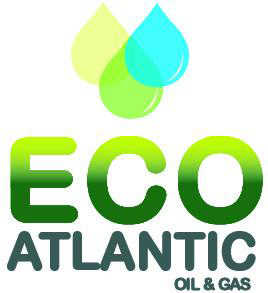Eco (Atlantic) Oil and Gas has reported encouraging findings from its seismic surveying in the Orinduik block, offshore Guyana.
“The company has been very encouraged to date by the quality of data received and interpretations to date, which have firmed up the previously outlined targets as well as identifying new additional potentially sizeable structures,” the company said in a recent press statement.
Eco Atlantic (Guyana) Inc., a subsidiary of Eco Atlantic, holds a 40% working interest in the Orinduik block, and Tullow holds the remainder.
In January of 2016, the Government of Guyana, through Minister of Natural Resources, Raphael Trotman, signed a Petroleum Prospecting License and Production Sharing Agreement with the joint venture team of Tullow Guyana B.V. and Eco (Atlantic) Guyana Inc. for a concession of 1,801 sq. km, called the Orinduik Block, just offshore Guyana.
In September of last year, Eco announced that its subsidiary, Eco Atlantic (Guyana) Inc. (“Eco Guyana”), had entered into an option agreement on its Orinduik Block, with Total E&P Activités Pétrolières, a wholly-owned subsidiary of Total SA.
The company’s statement said that it continues to work closely with all parties, including Total, to ensure that upon completion of the interpretation and delivery of all data, a decision with regards to the previously announced Farm-out Option can occur in a timely fashion.
“We are pleased that we have the opportunity to work closely with some of the world’s leading explorationists and look forward to working with the entire team together as we narrow down our initial drilling targets on the path forward,” the statement said.
Chief Operating Officer of Eco Atlantic Colin Kinley said in the statement that the company has the benefit of a significant 2D data set that ties into areas of the recent Exxon discoveries offshore Guyana, which are now estimated to total more than 3.2 billion recoverable oil-equivalent barrels. “This data ties back into our recently acquired 3D seismic and that has allowed us to better track the age and the quality of the sands and mechanisms that create the hydrocarbon traps. We interpret the charge from the source rock migrating up-dip and being trapped at various locations on the foreslope which is supported with each Exxon discovery downdip of us. This, in turn, is giving us a better understanding of the features that allow those same hydrocarbons to feed up into the channel and fan systems on our block,” Kinley said.
“Results to date have led the company to draw initial interpretations of the thickness and quality of sands which appear to be very promising. We are seeing many more interesting features and targets across the Orinduik Block. Given these results and the need for a more expanded and detailed interpretation, we have taken longer than we originally envisaged to complete the processing with good merit. The existence of multiple exploration targets on the block will be very significant, not only in the resource numbers, but also in the economics of this shallow water play, in terms of both drilling and potential development for our partnership, and for Guyana. The dataset will be released to Total as per the Farm-out Option agreement, and we believe this thoroughness with regards to processing and interpretation, should lead to a heightened resource estimate to that based on the historic 2D seismic,” he added.
Eco also stated that it was pleased to confirm that the data is also being interpreted in parallel by its consultant Gustavson Associates for the purpose of producing an Independent Resource Report.





